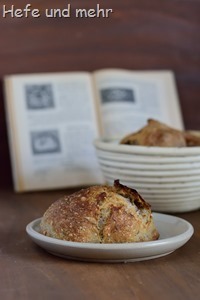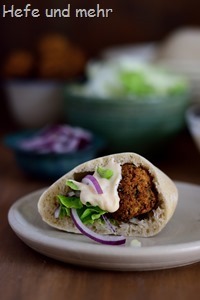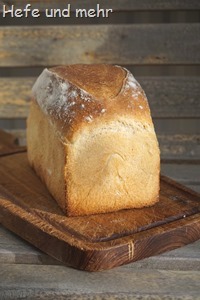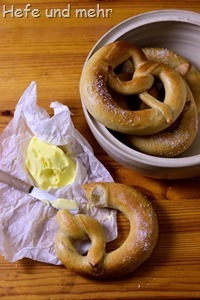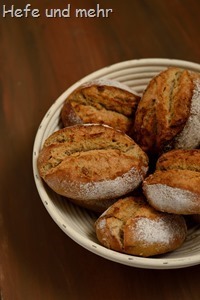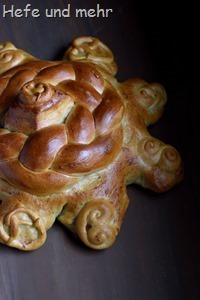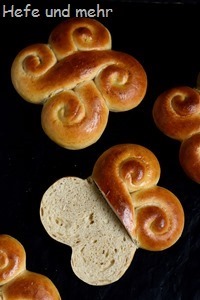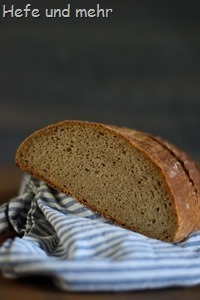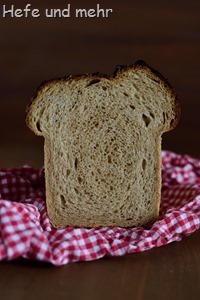![Pausenbrot[3] Pausenbrot[3]](https://www.hefe-und-mehr.de/wp-content/uploads/2019/05/Pausenbrot3_thumb.jpg) Last weekend, a reader asked if I had an idea for baking a bread on a busy week night. She had a clear idea of what ingredients she would like in her bread: white flour plus a tiny bit of whole grain mixed with a lot of seeds. And I had a very clear idea on how to make a bread out of this.
Last weekend, a reader asked if I had an idea for baking a bread on a busy week night. She had a clear idea of what ingredients she would like in her bread: white flour plus a tiny bit of whole grain mixed with a lot of seeds. And I had a very clear idea on how to make a bread out of this.
As the she needed a bread which ferments over a whole night and day, I decided to make a straight dough. The long fermentation yields enough flavour. And I decided to add the seeds without soaking, too. But before anyone is now worried about the bread going dry: I added enough water for the seeds to soak during fermenting without withdrawing to much from the dough.
I used the recipe directly on this very busy weekend. Normally I would postpone baking to a calmer day, but so it worked like a charm. A great bread for busy days!

